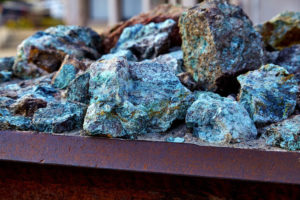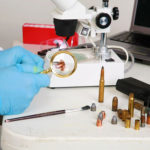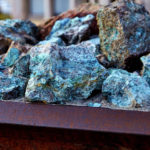
X-ray diffraction or XRD has made valuable contributions in the field of geology and mining. Geology is the scientific study on structure of planet earth, formation of rocks, sediments and minerals. Mining is an applied science which concerns with extraction of ores, fossil fuels for energy needs and minerals for commercial processing.
Minerals are inorganic materials majority of which exhibit a degree of crystallinity. Each mineral generates its unique x-ray diffraction pattern which serves to identify it. The diffraction pattern can be matched with a library of over 17,000 patterns for different minerals offered by the International Centre for Diffraction Data (ICDD).Using the data base helps in both qualitative and quantitative estimation of minerals. In addition x-ray diffraction provides details on degree of crystallinity, amorphous content, grain size, lattice deformations due to strain and can help trace the origins of minerals.
XRD Analysis complements information obtained from other analytical techniques such as polarized light microscopy and scanning electron microscopy. However, the lower cost of XRD makes it the preferred choice for studies directed towards evaluation of fine grain minerals and mixtures or intergrowths at the microscopic level. However, for elemental composition and texture analysis one has to resort to scanning probe microscopy and scanning electron microscopy.
Minerals exist in the Earth’s crust under different forms such as rocks, clays and sediments or as nodules on the sea bed. Some typical practices for sampling of geological specimens are outlined in the article.
Rocks
Rocks can vary in size as well as in uniformity of composition. The surface composition can differ from the interior due to weathering under natural environmental surroundings. Sampling plays a crucial role in rock analysis. The sample size should be at least 5 – 10 g. It should comprise of different layer cuttings or drillings at different surface points which after fine grinding in a pulverising mill is dried at around 60°C overnight and quartered to get a uniform sample.The sample thus obtained is mounted onto a surface mount to obtain a uniform surface for analysis.
Clays
Like rocks 10- 15 g of clay sample is taken and any rock bits are sieved out. The fine clay mix is ground in a mortar and pestle to obtain stone free specimen. The powder is transferred to a centrifuge tube topped up with Calgon solution and after shaking is centrifuged to remove the course sediments. Centrifugation is repeated to permit sedimentation of fine solids. A small portion of the clear sediment is spread on a glass slide and allowed to dry. The slide is then mounted onto the sample stage of goniometer and subjected to the typical XRD analysis. In addition to mineralogical analysis it also gives useful information on particle size.
Weathering of Rocks and minerals
The composition of minerals undergoes continual changes due to environmental factors such as acid mine drainage, hydrological changes, changes in temperature and pressure due to rock dynamics. Such changes can be monitored using XRD analysis and can help establish the evolution of mineral resources in different mineral rich areas. The data collected from remote sensing can be correlated with the XRD analysis data to reach commercial decisions concerning mining activities.
Gem and Jewellery
XRD is a useful tool for grading of minerals in terms of their origin, degree of crystallinity and purity. Such details are essential for jewellery makers to manufacture items with features in demand in the consumer market.





Leave a Reply